
Breadcrumb
- Home
- Labs
- Advanced Labs
- Classifying Galaxies
- Part 2: Galactic Stamp Collecting
Part 2: Galactic Stamp Collecting
Main navigation
Background: de Vaucouleurs’s Classification System
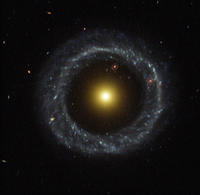
In the first part of this lab, you used Hubble's Tuning Fork to classify galaxies.Gerard de Vaucouleurs expanded on Hubble’s Tuning Fork and is a common, more detailed, variant used by astronomers today.
Below is an overview of the de Vaucouleurs system.
Elliptical Galaxies (E): Characterized by how spherical they appear, with 0 being spherical and 9 being oblong.
Giant Elliptical Galaxies (cd): Giant elliptical with a large halo of stars
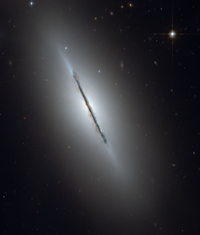
Lenticular Galaxies (S0): Disk like galaxies with a central bulge but no spiral arms. Many lenticular galaxies are viewed edge on, which makes determining any spiral arm structure difficult.
Anemic Spirals (A): Anemic spiral galaxies are disk galaxies with faint spiral arms and faint central bulges. They can be thought of as intermediate steps between Lenticulars and Spirals.
Spiral Galaxies (SA): Disk like galaxies with spiral arms and a central bulge. How tightly wound the spiral arms are run from ‘a’ to ‘c’, where ‘a’ is tightly wound. ‘d’ is used to describe spirals with faint arms and a faint bulge. ‘m’ is an irregular spiral with no bulge.

Barred Spiral Galaxies (SB): These types of galaxies have the same subclassifications as SA galaxies, only that they have a noticable bar in the central component.
Irregular Galaxies (I): Usually classified as Im, these are highly irregular galaxies as Hubble may have classified them.
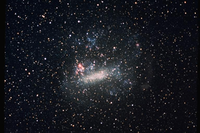
Each of these broad classifications can also have an addition of:
irregular (m): a bulgeless galaxy
peculiar (p): A galaxy which is the result of interaction and may have a secondary galaxy ‘attached’ to it.
ring (r): Galaxies that have ring structures.
To further confuse the issue, it is possible to have SAB galaxies, which are spiral galaxies with an intermediate bar structure. There can also be intermediate steps for how tightly wound the spiral arms are, leading to labels like SBab, which is a barred spiral with arms between the ‘a’ and ‘b’ label. Similarly, there can be SABab or SABbc.
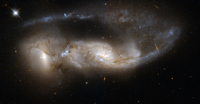
As a side note, galaxy morphology is, many times, subjective, and that is what makes it difficult. There are many characteristics that are trying to be described with as few labels as possible, which will lead to confusing labels. So with that confession, let us start stamp collecting.
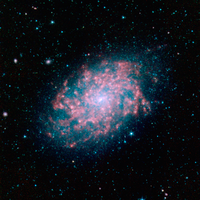
Exercise: Classifying Galaxies with de Vaucouleur.
- Choose a galaxy cluster from the list below. Using the images provided, classify the galaxies using the de Vaucouleur system and the simple Hubble Tuning Fork from part 1.
Galaxy Clusters:
Virgo I Cluster
Virgo II Cloud
Virgo III
Canes II
Centaurus A Group
Maffei Group
- Draw Hubble’s Tuning Fork and identify a representative from your galaxy cluster for each of the classifications. You may have some that overlap from the de Vaucouleur system, or you may be missing a morphological type.
- Based on the types of morphologies of galaxies within each cluster, make some conjectures about the age or interaction history of your group knowing what you know about how galaxies evolve.
- Describe the differences between the de Vaucouleur system and the simple Hubble Tuning Fork.